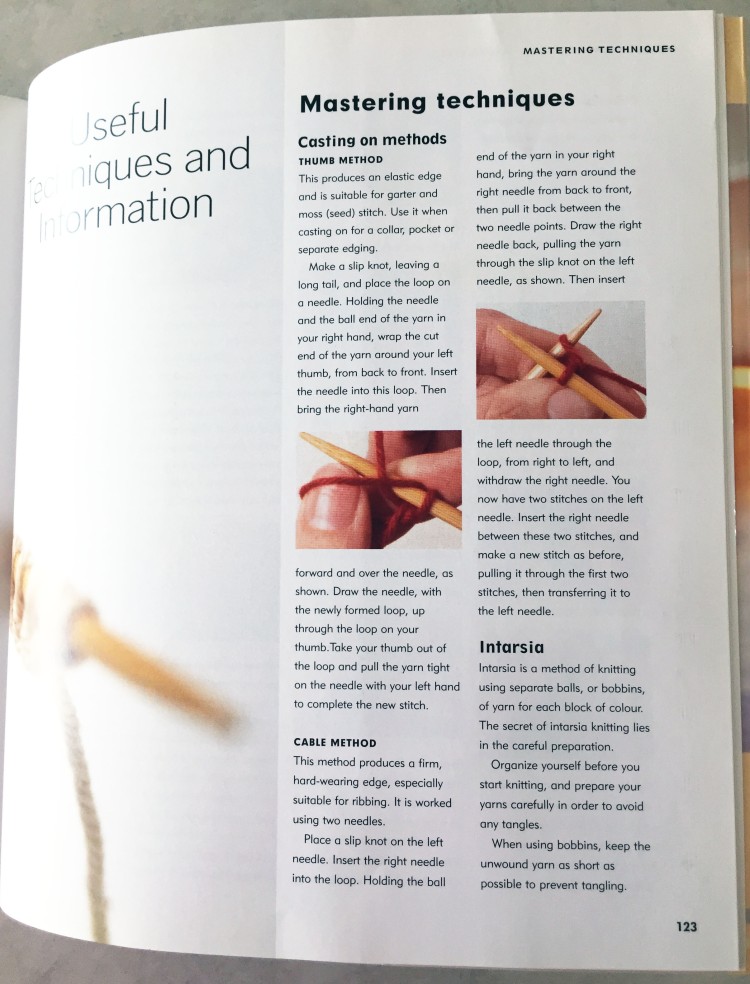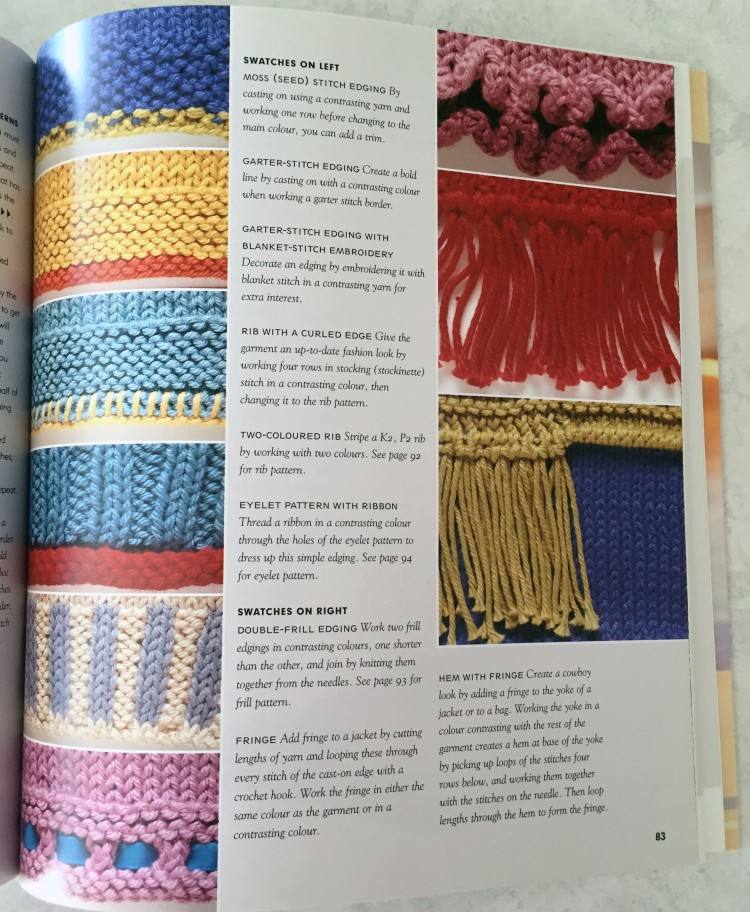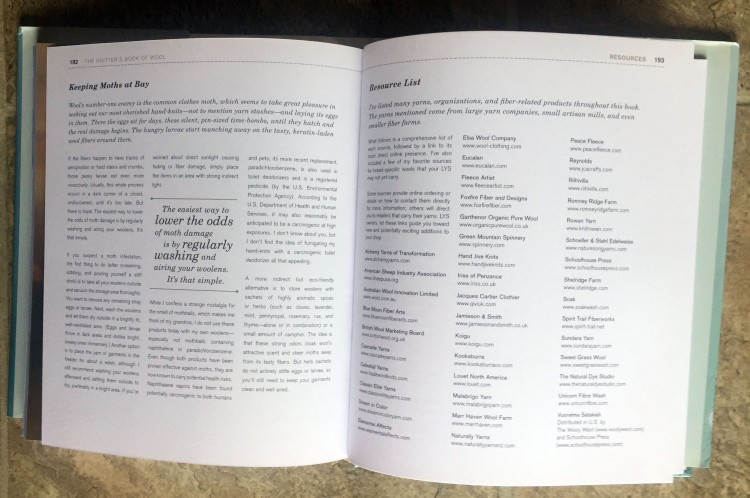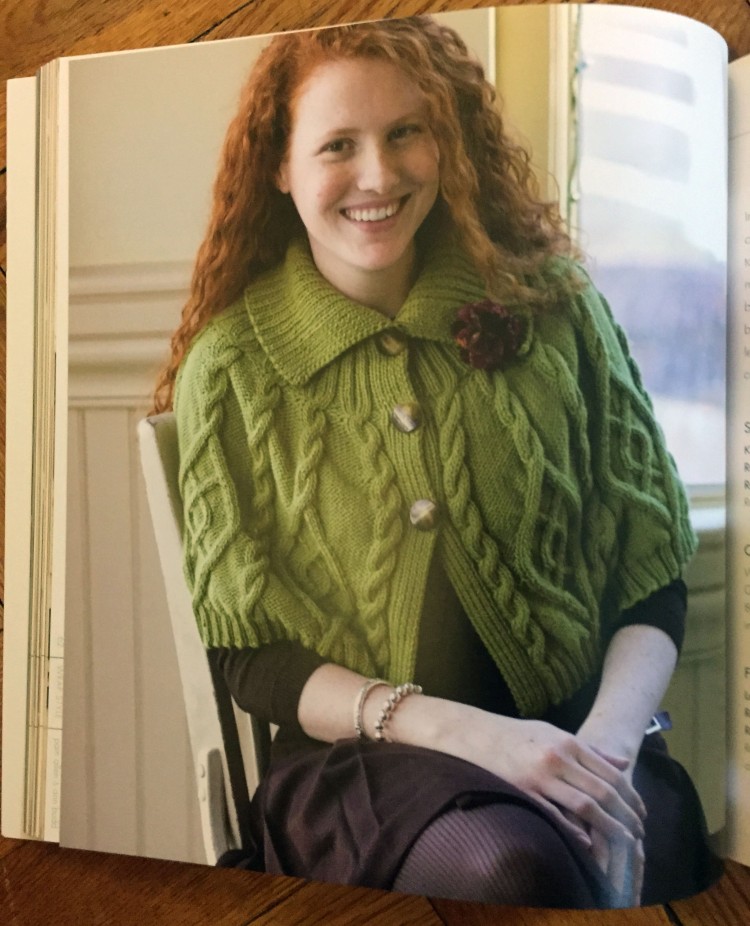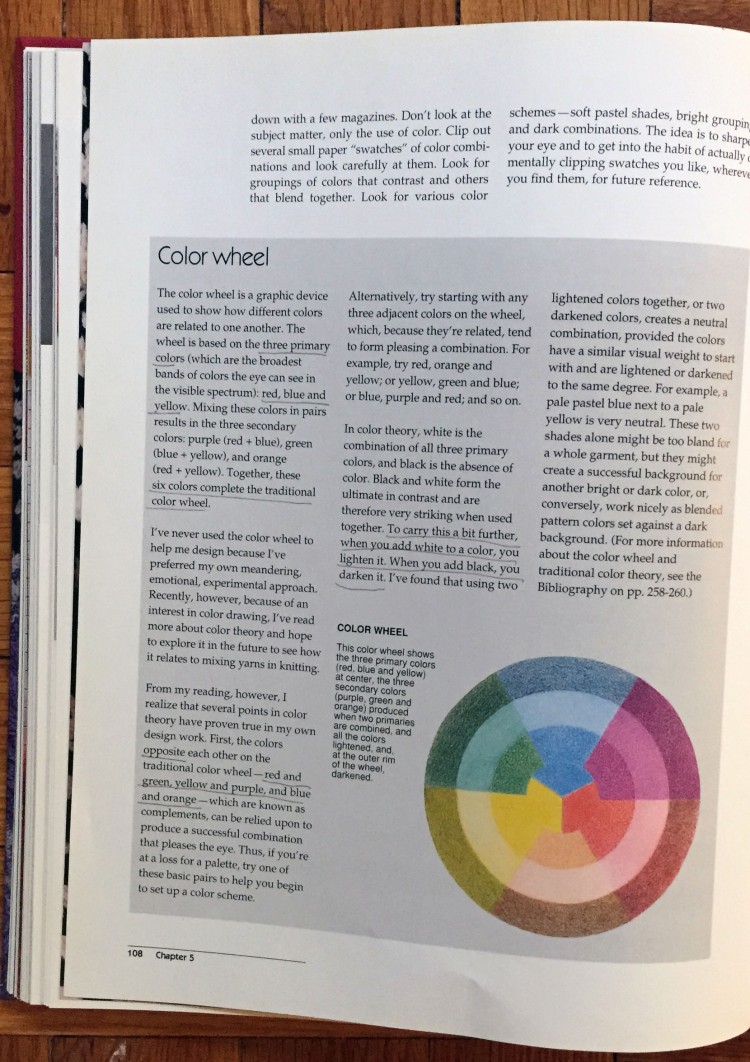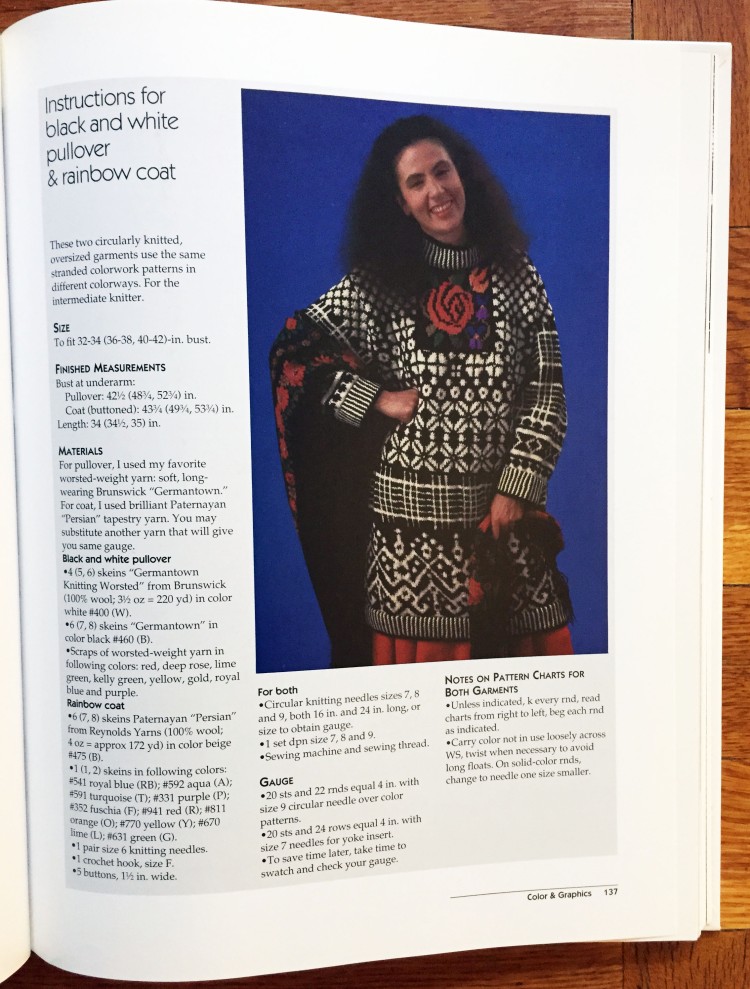
How to Knit – Debbie Bliss
I’m starting this book review in a quandary – to keep or not to keep. On first pass, I was ready to chuck this one. As much as I love Debbie Bliss (fantastic UK designer), I didn’t think this book offered enough to keep on my shelf. On 2nd pass, I’m conflicted.

How to Knit – back cover
The back cover could have added a little more info for the reader? What were the publishers thinking?

Great illustrations
The illustrations in this How-to are very clear and would be easy for a novice to use.

Aran Workshop
This section comes pretty early in the book – Chapter 3 as a matter of fact. It’s really Debbie Bliss’s favorite style so I’m not surprised to see it covered extensively.

Cable Workshop
In the middle of the Aran chapter, this simple cabled sweater is a simpler version of some of the other knits.

Lace Workshop
The best thing about this chapter is the 23 lace stitch pattern samples.

Edgings
Love the edgings. This makes the book a winner. I just used the leaf edging for a project. Wish the instructions were charted and not so UK centric with yf terminology that is not used by US knitters.

Entrelac illustrations
Ok – I know you’re asking – what the hell is Entrelac. Not a common technique, but these illustration make it very clear.
What did I decide? I might keep this book for awhile and see if I refer to it before moving it along. My copy is a bit worn and I probably couldn’t sell. I do think the UK vs US make it less valuable for a new knitter, but then again – I’m not a new knitter.



















